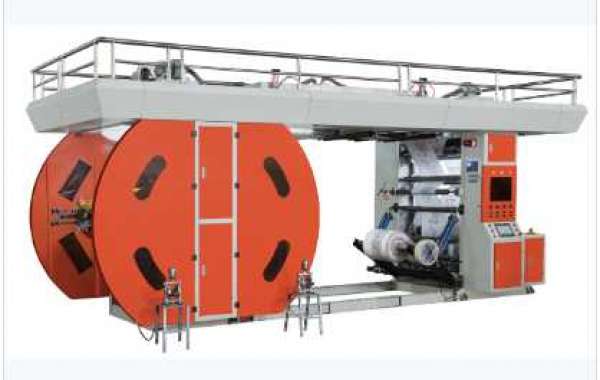What is the traditional PS version of the flexo printing machine? What are his advantages? How is the plate-making process? About the above issues, Deguang will be introduced to you one by one in this article. Interested partners can come and have a look with me.
1. Introduction to traditional plate making PS plate of flexo printing machine
Lithographic plate-making pre-coated photosensitive plate is abbreviated as PS plate of traditional plate making of flexo printing machine. It is the abbreviation of Pre-Sensitized Plate, which refers to the printing plate that is pre-coated with a photosensitive layer on the aluminum plate and then sold to the printing factory. It is a photosensitive adhesive made of diazo or azide, nitro, and other photosensitive agents and resins. It is coated on the plate base and can be stored for later use after drying, so it is called a pre-coated photosensitive plate. When using the traditional plate-making PS plate of the flexo printing machine, a series of processes from grinding to plate baking can be omitted, and the negative can be directly exposed and developed. It has the advantages of simple operation, high printing resistance, stable performance and high quality Good, and other advantages.
2. Surface treatment of PS plate for traditional plate making of flexo printing machine
Before coating the photosensitive liquid on the surface of the plate, a series of surface treatments must be carried out for the traditional PS plate of the flexo printing machine. The surface treatment of the traditional PS plate of the aluminum-based flexo printing machine includes three processes: roughening the surface, anodizing, and sealing.
Electrolytic roughening is to roughen the surface of the aluminum plate by electrolysis, so that the surface of the aluminum plate forms a fine, uniform, sand-mesh structure with a certain roughness, so as to increase the specific surface area of the plate base. The purpose of electrolytic sand is to use the degreasing aluminum plate as an anode electrode, put it in an acidic electrolyte, and pass an alternating current. The traditional PS plate of flexo printing machine is anodized so that the surface of the plate base is covered with a hard, dense, and passivated oxide film, which has high hardness and wears resistance, and avoids direct contact between the photosensitive layer and the aluminum plate base. . The oxide film is porous, which makes the plate have a strong adsorption capacity. If the photosensitive liquid is directly coated, the photosensitive material will be firmly adsorbed, resulting in incomplete development, and the blank part of the printing plate will be dirty during printing, so it needs to be sealed. . Sealing is to plug some extremely tiny holes in the oxide film layer, reduce the pores on the surface of the aluminum plate, and thicken the wall of the larger holes. Commonly used sealing methods are the steam sealing method, hot water sealing method, etc. The commonly used sealing solution is the silicate solution.
3. The plate-making process of traditional plate-making PS plate of flexo printing machine
According to the photosensitive principle and process of the photosensitive layer, the pre-coated photosensitive plate is divided into the traditional plate-making PS plate of the positive-type flexo printing machine and the traditional plate-making PS plate of the negative-type flexo printing machine.
(1) The positive pattern (positive) of the PS version of the traditional plate-making flexo printing machine of the positive type flexo printing machine is represented by P, that is, the P-type, which is printed with a positive negative film. The photosensitive principle of the traditional plate-making PS plate of the positive-type flexo printing machine is to use the diazo compound to decompose under light, and then develop it with a dilute alkaline solution to be dissolved, exposing the aluminum plate base, forming the blank part of the printing plate, that is, the non-graphic part, However, the photosensitive layer of the unseen part has not undergone any change, nor has it been dissolved by the dilute alkaline solution, and remains on the plate surface, constituting the oleophilic printing part of the printing plate.

The plate-making process of the traditional PS plate of the positive-type flexo printing machine is exposure→development→dirt removal→baking plate→application of developing ink→gluing.
Exposure: Exposure is to close the emulsion surface of the positive original plate with the photosensitive layer of the traditional PS plate of the flexo printing machine, and expose the printing plate. The photosensitive layer of the traditional PS plate of the flexo printing machine undergoes a photolysis reaction in the visible part, and the photosensitive layer in the unseen part does not change.
Development: The exposed PS plate of the traditional flexo printing machine is developed with a dilute alkaline solution so that the compounds that undergo a photolysis reaction in the visible light are dissolved, to remove the photosensitive layer in the visible light part and retain the photosensitive layer in the unseen light part. A lipophilic graphic part is formed. The exposed part eventually forms a hydrophilic blank part. Dirty removal: Use the smudge remover to remove smudges other than the graphics and text on the layout. The decontamination liquid should have a certain emulsifying ability and strong solubility.
Baking plate: The baking plate is to coat the protective liquid on the surface of the printing plate, then put it into the plate baking machine for baking, take out the printing plate, and after natural cooling, develop it again with the developer, remove the protective liquid, and dry it with hot air. The purpose is to improve the durability of the printing plate.
Bake, take out the plate, and after natural cooling, develop it again with the developer, remove the protective solution, and dry it with hot air. The purpose is to improve the durability of the printing plate.
Coating and developing ink: coating the developing ink on the graphic part of the printing plate, its purpose is to improve the ink affinity of the graphic part of the printing plate, and it is convenient to check the quality of the printing plate and protect the plate surface from light damage.
Glue: The printing plate should be coated with a layer of gum arabic before printing on the machine to protect the layout and prevent it from being polluted and oxidized.
(2) PS plate of traditional plate making of negative type flexo printing machine
The negative type (negative) is represented by N, that is, the N-type, which is printed with negative image negatives. Negative-type photosensitizers generally use diazo compounds to cross-link or polymerize after being exposed to light, and become insoluble in the developer, while the unseen part is soluble in the developer. Therefore, after exposure, it can be developed, the unphotosensitive layer is removed, the plate base is exposed, and a hydrophilic blank part is formed, while the insoluble substances in the visible part are lipophilic and form the basis of graphics and text. SCPG is low, and in order to improve this weakness, a reinforcing base paint is applied to the graphics. The plate-making process of the traditional plate-making PS plate of the negative-type flexo printing machine is similar to that of the traditional plate-making PS plate of the positive-type flexo printing machine. In the image and text part, the photosensitive layer in the unseen part does not change, and finally forms the blank part of the printing plate.
Well, the above is the whole content about the traditional PS plate making of the flexo printing machine that Luoao brought to you today. I believe that after reading the above content, everyone has a certain understanding of the traditional PS plate making of the flexo printing machine. I have also learned about the plate-making process. I hope the above content will be helpful to you. See you in the next issue.






